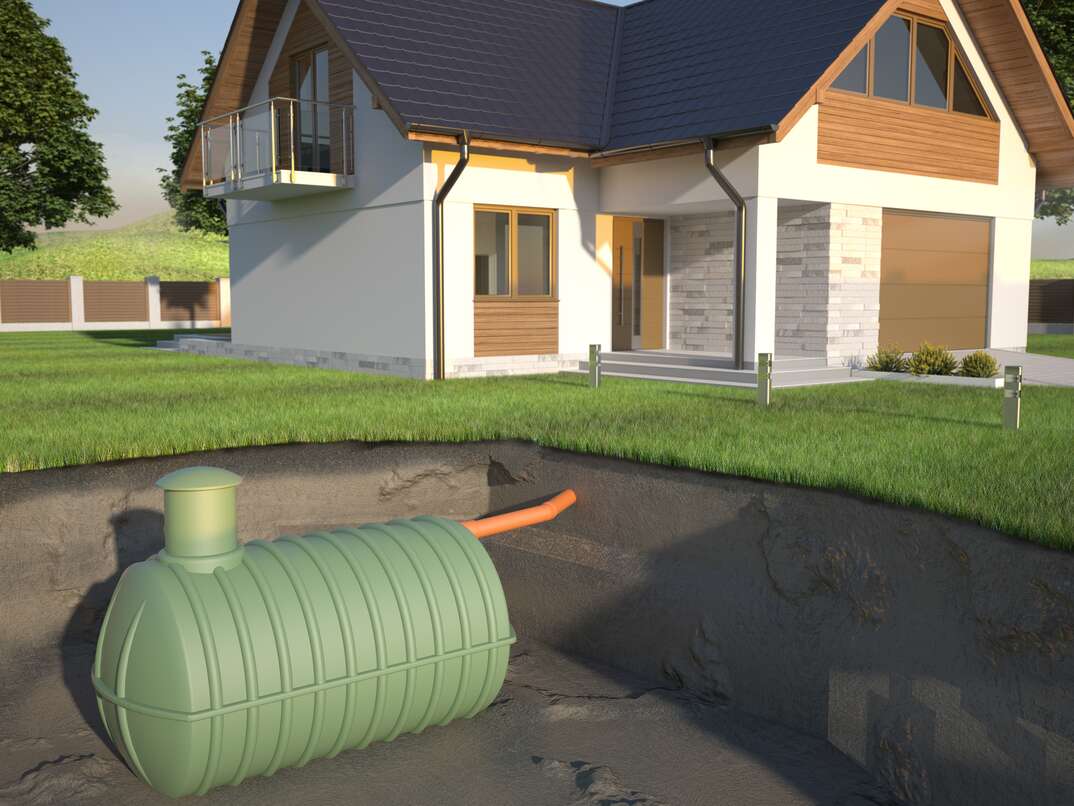Certain aspects of homeownership are often hidden until there is a problem. The septic tank is one of the most important, yet often overlooked part of a house. We often ignore it and assume that it can perform its job without concern or need for maintenance. Like all systems that uses septic, the septic tank has an estimated lifespan, and will eventually need to be replaced.

Unprepared homeowners may find it difficult to afford the expense of replacing a septic system. Many factors contribute to the overall cost, making it essential to understand the elements that affect budgeting for the replacement of a septic system.
To figure out the true cost of a septic tanks replacement, you need to look beyond the price. The tank that was previously used must be removed and a new one installed. In fact, many elements and services are a part of the overall cost. Each step, from getting permits to hiring professionals as well as excavation and installation incurs costs. The homeowners must plan their plan their budgets accordingly.
The cost of replacing the septic system, which includes the cost of installation for the leach field as well as septic system itself is a significant factor. The cost of a new tank is subject to a wide range of variations based on the size and type of the tank, and the difficulty of the installation. The price can be influenced by the location of your home, local regulations and the soil conditions. Talk to a septic expert to analyze your needs and provide an exact estimate. The experts will analyze elements like the size or shape of your leach fields to provide an accurate estimate of your overall costs for your septic system.
Alongside the tank, another substantial expense is the leach field, also known as a drainfield. It is essential for the treatment and dispersal of the wastewater. The replacement of a damaged, or failing leach field is a meticulous process and can significantly impact the overall septic replacement cost. When calculating the cost, it is important to consider things like the size and composition of the leach fields, accessibility, and soil composition.
The expenses of a new septic system is not only tangible, but also intangible. The process could disrupt your everyday routine, and require the temporary removal of your residence or limit the use of water during the installation. It is important to consider this inconvenience when planning the project, as it can affect your day-to-day routine and result in additional expenses.
Furthermore, it’s essential to understand that regular maintenance and care of your septic system is crucial for extending its life and limit the possibility of a premature replacement. The absence of routine maintenance work can result in more serious problems down the line including the tank failing or damage to the drainfield. Budgeting for septic maintenance is a smart investment and will help you save money in the long run.
By now, you may have realized that determining the septic tank replacement cost is not a straightforward task. It takes careful consideration of many elements, ranging from size and material of the tank, to the complexity of the installation and condition of the leach field. Additionally, the location of your property as well as local regulations can impact the overall expense. It is vital to seek advice from professionals who are experienced in the replacement of septic systems.
If you’re thinking of replacing your Septic system, you might be shocked to discover there’s hidden expenses that you may not have thought of. The costs can quickly add up, and you must be aware prior to making any decisions.
Here are a few of the hidden costs of replacing the septic system
The cost of permits and inspections. Your local government will require permits before you begin your project to upgrade your sewer systems. These permits can be costly and you could also have to pay for inspections.
The expense of excavation and removal. The old septic system needs to be removed and excavated before the new system can be installed. It can be a costly process, especially if the old system is in a remote area.
Cost of backfilling and the cost of backfilling. After the old system has been taken out, the hole must be refilled and graded. This will ensure that your new system drains properly.
The cost of landscaping. After the new system has been installed, you might need to do some landscape work to keep it looking clean and neat. Costs can quickly go by the time you hire a professional landscaping company.
It is important to consider the hidden costs when budgeting for the replacement of your septic system. This will ensure that you don’t get any unpleasant surprise.
Eco-friendly system for septic is a good alternative for homeowners with a limited budget. These low-cost alternatives are environmentally friendly, as they decrease water pollution and minimize runoff. Additionally, eco-friendly septic options are becoming increasingly available and affordable, which makes them the perfect option for those who want to lessen their environmental impact without breaking the bank. While there are cost-related initial expenses associated with converting to an eco-friendly system, the savings over time will more than compensate the cost of the initial costs. Green living isn’t only a trend, it’s a vital lifestyle choice every person should consider if they care about the future of our planet. If you have the right plan in place, you can give yourself peace of mind knowing that you’re doing your part to benefit the world at large while also making sure your property will run efficiently and effectively with minimal maintenance needs as well as lower monthly costs.
